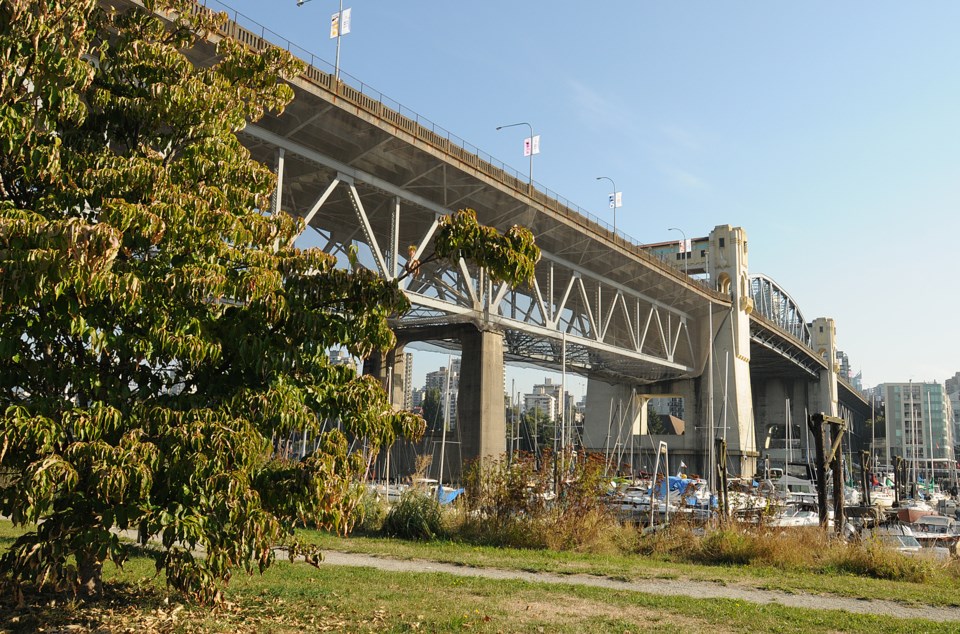The City of Vancouver cannot use a speculative fear of terrorism as an excuse to keep engineering reports about the aging Burrard Street Bridge secret, the province’s Freedom of Information referee ruled Sept. 12.
Hamish Flanagan, an adjudicator with the Office of the Information and Privacy Commissioner, ordered city hall to release 11 reports in-full by Oct. 27. The decision comes nearly two years after a Sept. 20, 2012 request for records about the decaying span’s condition and cost estimates to fix or replace it. More than three-quarters of the 510 pages released almost three months later were censored.
“The reports include photographs of various parts of the bridge and drawings of proposed modifications to the bridge,” Flanagan wrote. “The reports contain options and recommendations for work to the bridge, including some cost estimates of various options including the recommended work.”
In her submission to the November 2013 inquiry, city hall FOI director Barbara van Fraassen claimed disclosure of records would put the 82-year-old bridge in jeopardy of an attack. Flanagan noted that city hall offered no evidence of a threat to the bridge.
“(City hall) refers to previous incidents of terrorism, including an attempted bombing at the B.C. Legislature, the Boston Marathon bombing in 2013 and the bombing of an Air India flight in 1985 to support its argument,” Flanagan wrote. “The applicant submits that the city has no history of terrorist attacks and no known threat to its bridges in particular.”
Flanagan cited the OIPC’s 2013 order for the Provincial Capital Commission to release CPR Steamship Terminal Building architectural drawings. While city hall claimed the bridge was more critical infrastructure than the Victoria building, Flanagan concluded: “I cannot see how the information could aid any potential terrorist attack on the bridge, particularly in light of the information about the bridge that is already available simply via a visual inspection of it.”
Flanagan also ruled disclosure would not harm the financial interests of the city or the firms that authored the reports: Trans Canada Coating Consultants, Associated Engineering, Buckland and Taylor and Levelton Consultants. None of the four firms filed submissions to the inquiry.
“Arguably, the release of the reports will assist in obtaining fair bids, because having multiple informed bidders is the best way to assure the competitiveness of the (request for proposals) bid process,” he wrote.
Flanagan agreed with city hall that the reports constituted advice or recommendations, but “the information cannot be withheld because it is part of a technical study.”
Last November, Graham Infrastructure was contracted for $5.12 million to replace bearings and expansion joints and make localized concrete repairs. A report to city council said the bridge still needs replacement of concrete handrails and rehabilitation of the concrete deck.
Flanagan’s decision was the third consecutive OIPC ruling against city hall in less than a month.
On Sept. 8, adjudicator Caitlin Lemiski ordered the city to release bidding information for the $4 million payment-by-phone for parking meters contract. On Aug. 28, adjudicator Elizabeth Barker ordered disclosure of email, memos, forms and an invoice about the city’s surveillance camera system.
“It’s a little unusual to see this,” said Vincent Gogolek, executive director of the B.C. Freedom of Information and Privacy Association, about the three cases. “(City hall) just didn’t seem to bring any evidence.”
twitter.com/bobmackin



